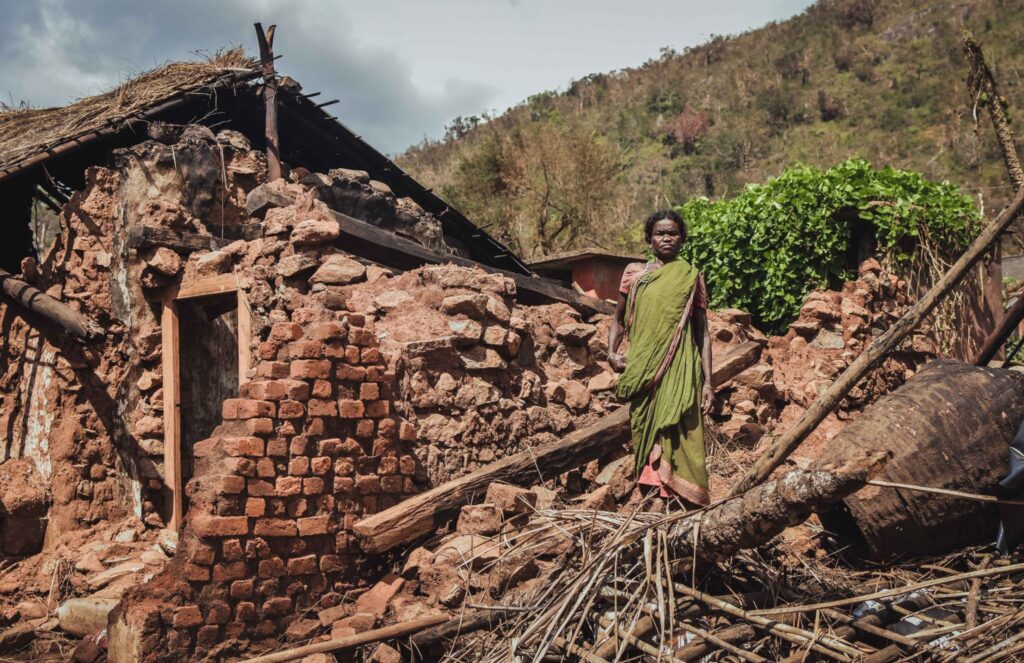India’s Third National Communication to the United Nations Framework Convention on Climate Change (UNFCCC), submitted in December 2023, highlights the impact of extreme climatic events and variations across the country. These events include cyclonic storms, droughts, floods, lightning, thunderstorms, snowfall, cold waves, and heat waves.
Trends in Precipitation and Drought Conditions
- Standardised Precipitation Index (SPI) Analysis: The India Meteorological Department (IMD) has utilized the SPI to analyze trends in precipitation and drought conditions.
- 2021 Findings: Extremely dry and severely dry conditions were noted in several regions including Arunachal Pradesh, Assam, Meghalaya, Nagaland, Manipur, Mizoram, Tripura, Sub-Himalayan West Bengal, Sikkim, eastern Uttar Pradesh, Himachal Pradesh, and Jammu & Kashmir.
- Flood Trends: According to the National Remote Sensing Centre, the number of states affected by major floods increased from 8 in 2017 to 15 in 2021. Analysis indicates a rising frequency of heavy rainfall and flooding in peninsular, eastern, northeastern, and some central regions of India.
State-Specific Climate Vulnerabilities
- Manipur’s Climate Vulnerabilities: Manipur, located in the eastern Himalayan periphery, is particularly susceptible to water-induced disasters due to its fragile geo-environmental setting and economic under-development.
- Impact of Flooding: The state frequently experiences floods even from short storms due to man-made ecological changes, high-intensity rainfall in hilly areas, and subsequent damage such as breach of bunds, overflowing, landslides, erosion, and depression of riverbanks.
- Consequences: Floods affect agricultural lands, habitats, and urban settlements, leading to decreased crop yields, reduced income, food security issues, increased vector-borne diseases, and rural-to-urban migration.
National Action Plan on Climate Change (NAPCC)
- Framework and Missions: The NAPCC outlines the national framework for climate action through missions focused on solar energy, energy efficiency, water, agriculture, Himalayan ecosystems, sustainable habitat, green India, human health, and climate knowledge.
- Implementation: These missions are carried out by respective nodal Ministries and Departments.
State Action Plans on Climate Change (SAPCC)
- State-Level Initiatives: States and Union Territories (UTs) have developed SAPCCs to address specific climate-related issues. SAPCCs emphasize mitigating disaster risks due to extreme weather changes, including:
- Hazard Risk Vulnerability Assessment (HRVA) Reports
- State Disaster Management Plans (SDMPs)
- State Disaster Response Forces (SDRF)
Monitoring and Forecasting Extreme Events
- Flood Early Warning Models: High-resolution Digital Terrain Models and a web-enabled semi-automated early warning system provide real-time alerts for flood-prone areas. These models are supported by data from the Central Water Commission (CWC) and the IMD.
- Rapid Response and Emergency Services: The Rapid Response and Emergency Services/Decision Support Centre (RRES/DSC) under ISRO’s Disaster Management Support (DMS) programme assesses floods and other extreme events.
- Heat Forecasts: The IMD provides seasonal outlooks and daily temperature forecasts to offer early warnings for extreme heat events.
Multiple-Choice Questions (MCQs):
- What climatic events are highlighted in India’s Third National Communication to the UNFCCC?
- A) Earthquakes and tsunamis
- B) Cyclonic storms, droughts, floods, lightning, thunderstorms, snowfall, cold waves, and heat waves
- C) Volcanic eruptions and landslides
- D) Tornadoes and hurricanes
- Which tool does the India Meteorological Department use to analyze precipitation and drought conditions?
- A) Standardised Precipitation Index (SPI)
- B) Global Precipitation Measurement (GPM)
- C) Climate Prediction Center (CPC) Index
- D) Integrated Drought Index (IDI)
- In which year did the number of states affected by major floods increase from 8 to 15?
- A) 2015
- B) 2017
- C) 2018
- D) 2021
- What are some of the impacts of flooding in Manipur?
- A) Increased industrial output
- B) Improved agricultural productivity
- C) Decreased crop yields, reduced income, and migration
- D) Enhanced urban infrastructure
- Which document provides the framework for climate action in India?
- A) National Action Plan on Climate Change (NAPCC)
- B) State Action Plan on Climate Change (SAPCC)
- C) Disaster Management Plan (DMP)
- D) Environmental Impact Assessment (EIA)
- What does the Rapid Response and Emergency Services/Decision Support Centre (RRES/DSC) focus on?
- A) Economic forecasting
- B) Flood and extreme event assessments
- C) Agricultural productivity analysis
- D) Urban development planning
